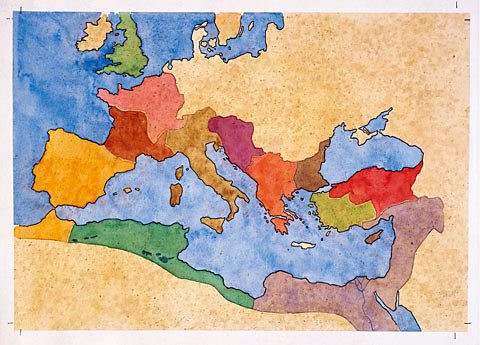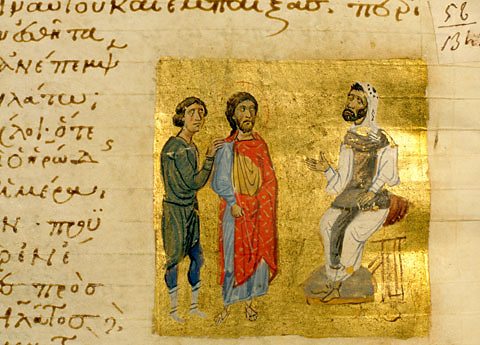Early Christianity
Across 2,000 years, Christianity has grown from a tiny community of disciples gathered around a village miracle-worker, Jesus of Nazareth, to a world religion counting over two billion members.
In its early centuries, Christianity achieved a phenomenal growth rate: it is estimated that it had hit roughly 30 million followers by AD350.
Yet things might not have turned out that way. Scholars now believe that dozens or even hundreds of prophets and other teachers founded new religious movements of varying sizes in antiquity. Most of them flourished for a time and then died out, while Christianity went from strength to strength. Its success might be explained by what we call today 'shareability'.

An Emperor's faith
Historians would rightly point to a single event in the 4th Century as the one that sealed Christianity’s fate. This was the conversion of the Roman Emperor Constantine.
Once Christianity was adopted as the Emperor’s religion, it quickly developed a strong institutional structure – one that would out-live the Empire itself.
Becoming a religious movement vigorous enough to be noticed and adopted by a Roman Emperor is, however, no mean feat. To discover how this happened, we have to go back to the very early decades of the Christian movement, before it was anywhere near becoming a world religion.


From the villages of Judea
The death of Jesus around the year AD30 did not mean the end of his teaching.
Jesus’s followers saw him as the Son of God and the Messiah and they believed that he was resurrected from the dead. A source from the generation after his death remembers Jesus as appearing to his disciples and telling them to carry his teaching to all the nations of the world.
The earliest Christian missionaries were wandering teachers who travelled from community to community. In the early years, the Gospels and other writings of the New Testament had not yet been written, so the teachers would tell stories about Jesus that had been handed down by word of mouth, or share the inspirations which came to them through prayer.

Cornerstone of 'viral' sharing
But how did these wandering teachers reach such large numbers?
Modern sociological research on new religious movements suggests that the groups that achieve the largest growth rates often do so by creating ‘sharing pyramids’ – if every member of a group recruits even two additional members, the numbers can begin to multiply dramatically.
In the early years, Christianity probably grew in the same way. Our sources tell us that the earliest Christian communities held communal prayers and meals in the households of community members. These home-based meetings would have provided a natural environment for friends and family to gain exposure to the new movement.
The Roman world in which Christianity grew was a multi-cultural society. Businesspeople and craftspeople often built up networks of trust based on shared geographical, religious or ethnic heritage. These networks seem to have been an important vehicle for the spread of Christianity. Female business-owners played an important role in these networks.
Bettany Hughes interviews Prof Kate Cooper about the involvement of women in the early Christian movement in this clip from Divine Women.

Social psychology
Research suggests that when ideas are shared, it is often because they are emotionally engaging – inspiring compassion or anger, for example, or a sense of awe. In other cases, people share ideas because they believe they will be useful.
We know that the early Christian communities handed down stories orally – the stories were later collected in written form, in the New Testament and other early collections. Interestingly, the stories preserved in these sources often exhibit just the kind of emotional cues that could trigger them to be widely shared: stories of inspiration, awe and righteous anger alongside practical advice about resolving conflicts and organising a community.
While no one factor can account for Christianity’s ‘population explosion’ in the last centuries of the Roman Empire, the mix of ‘shareable’ ideas and well-developed sharing networks put it in a strong position to survive and even thrive.

Learn more about this topic:
What do the lost gospels tell us about the real Jesus? document
The Jesus of the lost gospels is very different. Instead of the suffering, son of God, they depict a divine being whose sayings revealed mysterious secrets.

Inside the Church: What do you need to know? document
Although there are many different branches of Christianity, many churches share common features. Discover what these are and why they're important with this interactive guide.

Divine Women. collection
In this series of short films, Bettany Hughes uncovers the remarkable and neglected stories of women and religion.
